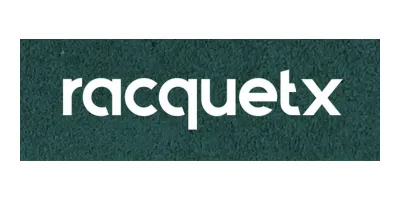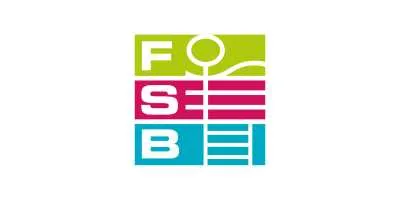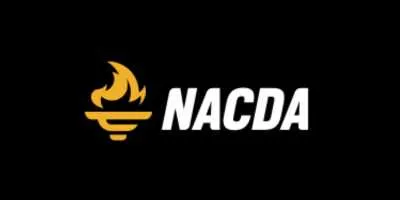Home » Running track » Running Track Dimensions and Layout Guide

Installing a new running track is an exciting time for any school, club, or community group. But before the installation process can begin, it’s important to make sure that you have the correct dimensions and enough space reserved for your running track.
When we hear “running track,” most of us think of the traditional 400-meter ring. While these dimensions still reign supreme, running tracks come in all shapes and sizes.
The running track you need will depend on the available space at your site, the types of events you plan on hosting, and the specific preferences and needs of athletes. When you consider all of these points, your running track dimensions could vary greatly from a conventional size.
In this guide, we’ll clarify some common terms related to running tracks, explore the different dimensions of running tracks, and provide some helpful tips for layout and design.
Pro tip: To get an idea of the total cost of your running track, try our running track cost calculator to get a customized cost estimate. You can also read our running track construction cost guide to learn what influences the total cost of such a project.
Running Track Dimensions
Before you run out and break ground on your new running track facility, it’s imperative to understand the types of running tracks and their dimensions. Let’s take a look at a few of the most common so you can plan more effectively.
1. Standard IAAF / Olympic / NCAA, 400 Meter Running Track
A Standard 400-meter running track is the quintessential oval shape that most of us think of when we hear the word “track.” This size is regulated by the International Association of Athletics Federations (IAAF), and it’s the minimum size required to host official competitions.
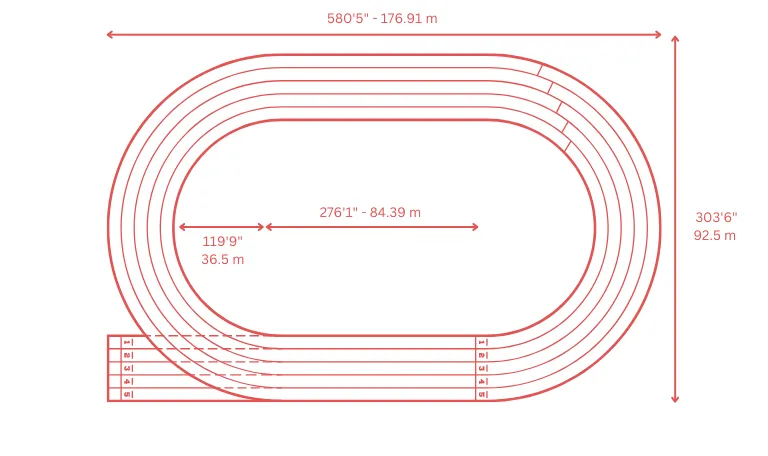
Dimensions:
- 400 meters or 1,312.3 feet long (first lane)
- The oval-shaped track is 176,91 meters long and 92,5 meters wide
- Usually, a 400-meter running track has 8 lanes of 1,22 meters wide (4 ft) and the track requires a total area of 157,092 square feet or 14,594 square meters
It’s important to note that while the first lane measures exactly 400-meters, each lane varies slightly as you move away from the center. This is due to the slight curve in the shape of the oval. Each lane is incrementally longer, peaking at 453.7 meters in the eighth lane.
2. Indoor Running Track Dimensions
One of the most popular options for sports facilities is an indoor running track. These can be a great choice for schools and universities that want to offer their students a place to train during inclement weather. They’re also popular in climates where the summers are too hot to train outdoors.
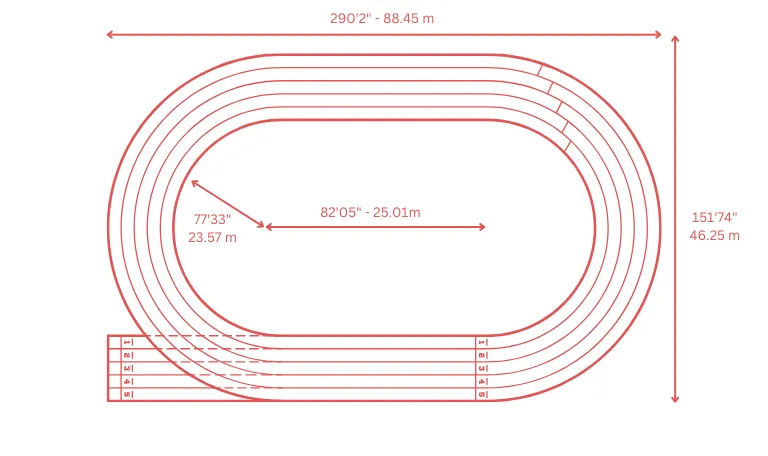
Dimensions:
- An IAAF or NCAA indoor running track is typically 200 meters long with 6 running lanes
- Running lane width varies between 0.9 – 1.22 meters
- The oval-shaped track is 88,455 meters (290,20ft) long and 46,25 meters wide (151,74ft)
- An indoor running track with 6 lanes requires a space of 78,546 square feet or 7,297 square meters (generally speaking at least 80.000 square feet).
There are no official standards for an indoor track, so the size and shape can vary depending on the facility. However, most indoor tracks follow some best practices. An experienced running track installation partner can help you determine the best size and shape for your indoor track.
3. 300-meter Running Track
The next option on our list is a 300-meter running track. These tracks are becoming increasingly popular, especially in high schools and smaller colleges. They offer a few benefits over traditional 400-meter tracks.
The most significant benefit is the reduction in size. A 300-meter track requires about 20% less space than a 400-meter track. This can be a critical factor when you’re trying to fit a track into a small space.
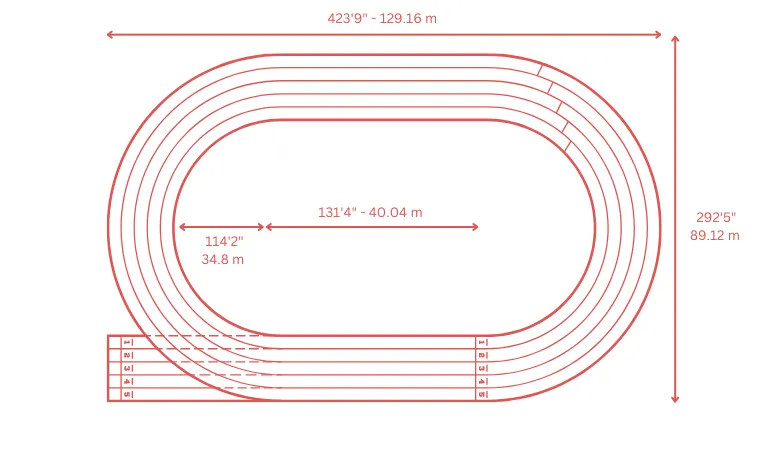
Dimensions:
- Unusually-sized track which is only built when there is not enough space for a 400-meter track
- Starting positions differ from 200 and 400-meter tracks to be able to handle all typical running distances
- Running lanes are 1.22 meters (4ft) wide
- The oval-shaped running track is 129,16 meters (423,9’) long and 89,12 meters (292,5’) wide. It requires a total area of 10,305 square meters or 110,922 square feet for the construction
If you’re short on space, or you aren’t planning on hosting high levels of competition, a 300-meter track might be the right choice for your facility.
4. 200-meter Running Track Dimensions
For sites that are even shorter in space, you can consider a 200-meter running track. These tracks are typically found in high schools and elementary schools. They’re also popular in community recreation centers.

Dimensions:
- An oval-shaped 200 meter running track (⅛ mile) is 88,455 meters (290,20ft) long and 46,25 meters wide (151,74ft) with 6 running lanes
- running lane width varies between 0.9 – 1.22 meters
- A 200-meter running track with 6 lanes requires a space of 78,546 square feet or 7,297 square meters (generally speaking at least 80.000 square feet)
5. Sprint track
Need a space-saving solution for your running track? A sprint track might be the answer. These tracks are designed for short-distance running and sprinting. They typically have 4 or 6 lanes and they’re only 100 or 200 meters long.
Dimensions:
- Sprint tracks are designed for 50, 60, and 100-meter dashes
- They are shaped in a straight line with 4-6 running lanes usually
- Each lane is 1.22 meters wide
- They can be placed inside a 200/400-meter running track or built as a standalone, straight, running track
- Length 60-100 meters, width 4,88 – 7,32 meters
- Occupy an area of 292,8 – 732 square meters
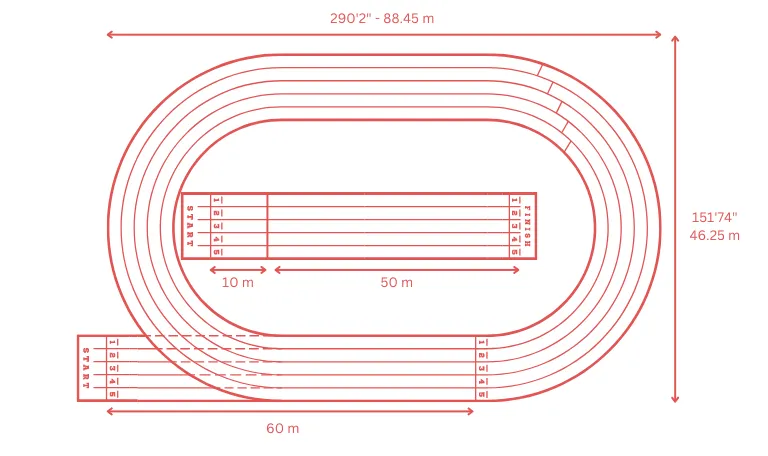
Football or Soccer Field with Running Track Dimensions
When you’re building a new running track, it’s crucial to maximize the space you have available. If you have a football or soccer field that isn’t being used to its full potential, you might be able to install a running track around the perimeter. This will give your community a place to run and stay fit while also giving them a chance to support their local teams.
It creates a multi-use venue for multiple sports, allowing you to get the most out of your facility. You can use the same space for football, soccer, and track events. This can be a great way to save money and time — and drive revenue — when you’re trying to schedule events.
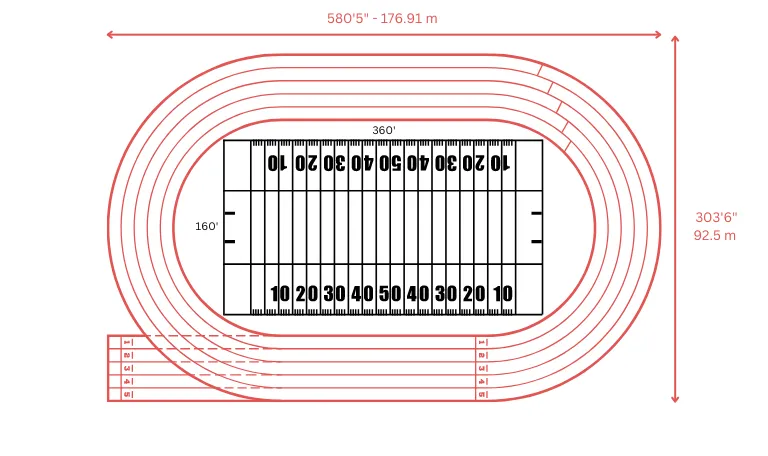
Dimensions:
- 400 meters or 1,312.3 feet long (first lane)
- The oval-shaped track is 176,91 meters long and 92,5 meters wide
- A standard-sized American football field is 360 feet long and 160 feet wide
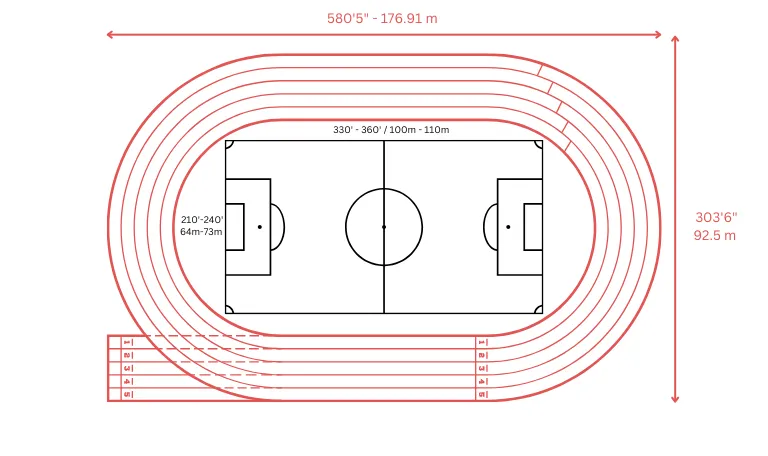
Dimensions:
- 400 meters or 1,312.3 feet long (first lane)
- The oval-shaped track is 176,91 meters long and 92,5 meters wide
- A soccer field dimensions may vary but they normally range somewhere between 330 – 360 feet long and 210 – 240 feet wide.
Considerations for Choosing the Right Track for Your Facility
The first step in choosing the size for your new running track is deciding its primary use case. To more easily find the right size, you should break it down into two categories:
Type of Sports Facility
Are you installing your track at a school, in a park, or in a commercial setting like a gym?
The size needs of each facility will vary. For example, a track for scholastic competition will likely need to meet certain guidelines than a community venue.
Level of Competition
What level of competition do you plan on hosting at your track? If you want to host local meets, then you won’t need as large of a facility as if you’re aiming to host regional or national competitions. Higher levels of competition have more stringent regulations, so if you’re unfamiliar with the rules it’s best to work with a professional. An expert running track installer can help answer questions and ensure you have the best choice for your needs.
Running Track Facility Layout and Floor Plan
Once you’ve decided on the primary use of your new running track, you’ll need to develop a floor plan. This will help you understand how the space will be used and what additional amenities, like bleachers or concession stands, will be needed.
First, Consider how much space you have for the facility. If you are installing at a school, you may be limited by existing structures and buildings. But if you are building your running track in an open lot, then you’ll have more flexibility.
Often it might not be possible to fit a full-sized running track in your space. In this case, you may need to rethink the events you’ll be hosting. For example, if you only have space for a 200-meter track, then you won’t be able to host traditional 400-meter races.
Hire an architect to draw up a layout or diagram of your running track facility. These plans will help you and your team visualize the space and make sure that all the desired amenities are included.
A professional can also help you determine if your proposed facility complies with any state or national guidelines.
Read more about running track design considerations in our separate guide.

Essential Amenities for the Track and Field Facility
Building a new sports venue, especially for track and field, means you need amenities. Although they might seem like overkill, extra add-ons help create a memorable and enjoyable experience for athletes, coaches, parents, and spectators alike.
Here are some of the options you have for amenities for your running track:
- LED lighting system – illuminate your new track with energy-efficient LEDs
- Bleachers – give your spectators and fans a comfortable place to sit and watch the competition
- Sound system – broadcast public address announcements, music, and more
- Scoreboard / Video display – display times, placements, scores, and keep your athletes and audience informed and engaged
- Changing rooms – athletes need a safe and clean place to change before and after their events
- Hydration area – safety is key at sports facilities, and keeping everyone hydrated is essential
- Fencing – protect your investment and create a division between the playing area and the spectator area
How to Fund the Construction of a Track and Field Facility?
We know, this is a long list of considerations for building a new running track. Although the initial cost might seem daunting, there are a number of ways to offset the cost of construction and make your project more affordable. Here are some ideas:
Grants
Check with your local government to see if there are any grants available to help fund the construction of public sports facilities. Check out our sports facility grants database to see if you can find a program that could match your needs.
Sponsorships
Reach out to local businesses and see if they’re interested in sponsoring your project. This is a great way to get some extra funding and also create some buzz for your new facility.
Crowdfunding
Crowdfunding is a great way to engage your community and get them involved in the construction of your new facility. You can set up a page on a crowdfunding website and share your project with potential donors.
Loans
You might be able to get a loan from the government or a private lender to help fund your project. This is a great option if you have a solid plan for how you’ll use the money and pay it back.
Calculate the Cost of Your Track Facility Construction at an Early Stage
Now that you know all of the considerations for building a new running track, it’s time to start planning your project. One of the first steps is to calculate the cost of construction. This will help you determine how much money you need to raise and what your budget should be.
Working with a trusted running track installation professional early in the process is crucial to getting an accurate estimate. They will be able to help you understand the cost of materials, labor, and any other associated costs.
Want to get an early estimate? Use our easy-to-use cost calculator and you’ll receive a detailed breakdown of costs in a matter of minutes.



